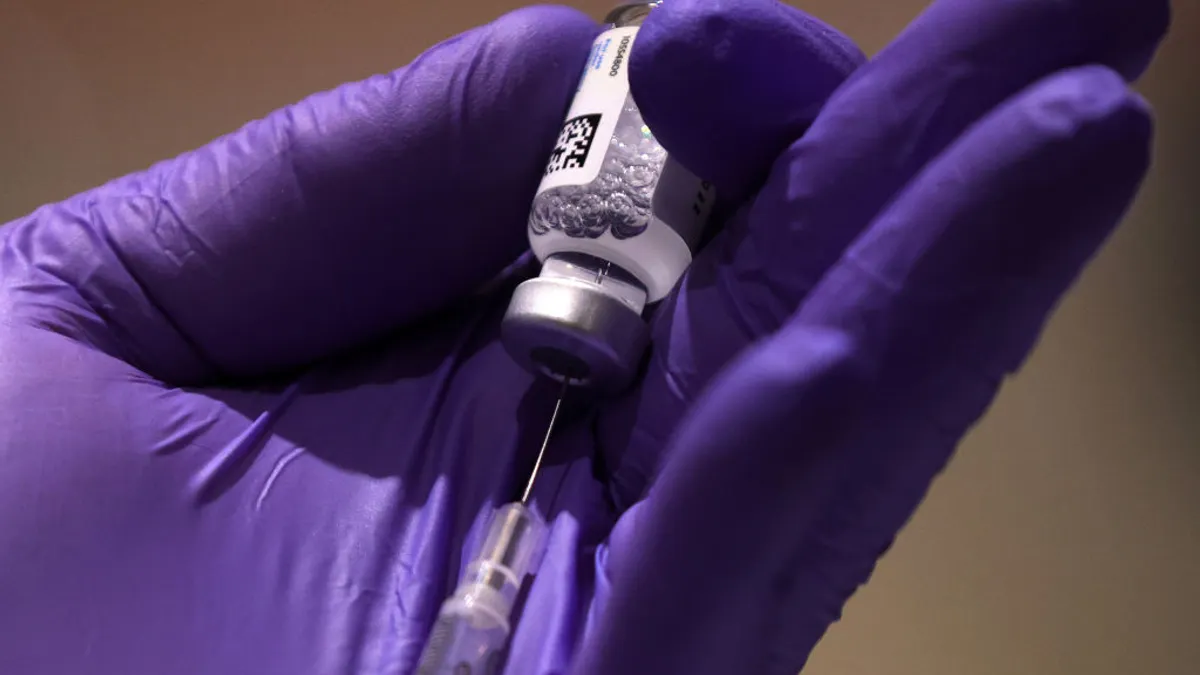While biotech’s investment market continues to rebound from its post-COVID-19 slump, layoffs are a frequent reminder of lingering troubles in the overall life sciences industry.
Layoffs often come down to four main factors: slowing investments for preclinical assets, patent expirations, regulatory changes around drug pricing and challenges specific to individual companies, said Arda Ural, the Americas life sciences leader at EY.
The layoff rate across biopharma has remained flat so far this year, said Ural, who’s seeing about 5,000 to 7,000 layoffs reported each month across biopharma in industry media trackers. And the biopharma workforce has stayed at about the same growth pattern since 2005 according to the Bureau of Labor Statistics, Ural said, suggesting there’s an ongoing balance between the number of jobs being created and those being axed, with R&D adding more headcount in recent years.
But two major events on the horizon could rattle this picture of stability.
A Federal Reserve cut to interest rates, which could be announced later this month, would help fuel new enthusiasm among investors.
The November U.S. presidential election is also looming large — and it’s not just about who wins, Ural said. Instead, the market reaction will hinge on whether there’s a smooth transition of power from the current president to the next.
If those factors fall in the market’s favor, Ural said the “optimism fatigue” felt by investors in recent years could be lifted, leading to “real market activity.”
“I would like to think the worst may be behind us soon,” Ural said. “The macroeconomic conditions may shift to a more lucrative environment, and then it’s going to come down to the company-specific challenges.”
For now, here’s what three of pharma’s recent layoff announcements indicate about the industry’s rocky road to better health.
Bayer
The story: Bayer revealed “significant” layoffs early this year as part of a major restructuring effort aimed at getting the struggling conglomerate back on its feet. The company slashed 1,500 jobs in the first quarter alone, two-thirds of which were in the managerial ranks — and the cuts keep coming.
In late August, a Swiss newspaper reported that Bayer laid off 150 workers at its consumer health division’s international headquarters in Basel. The reductions have also impacted the C-suite, which shed three executives from the crop science division and six from pharmaceuticals earlier this year.
The legal baggage that came with Bayer’s $63 billion Monsanto acquisition in 2018, which includes an estimated 54,000 lawsuits related to its weedkiller Roundup, remains a major drag on overall growth. The company is also staring down a patent cliff for the blockbuster blood thinner Xarelto, which was also subject to the government’s first round of Medicare price negotiations in 2026 triggered by the Inflation Reduction Act.
Bayer plans to wrap up its staffing overhaul by the end of next year. Although the makeover is still underway, Bayer recently reported some positive shifts in its latest earnings. Overall, the company pulled in just over $12 billion in revenue in the second quarter, beating analysts’ expectations by $100 million. The company also said its consumer health division has “returned to growth.”
The takeaway: Although Bayer’s Monsanto acquisition brought unique legal challenges, the match-up also showcases the difficulties surrounding mega-mergers. Increased scrutiny from the Federal Trade Commission in recent years, which led to a proposed merger between Sanofi and Maze Therapeutics getting scrapped last year, could also make pharma companies nervous about tying the knot, especially when there’s any overlapping capabilities in their pipelines or portfolios.
“We never say never to mega-mergers,” Ural said. “But the hurdle for mega-mergers to deliver on the deal hypothesis is higher now.”
BioMarin Pharmaceuticals
The story: BioMarin Pharmaceuticals has been trimming its workforce throughout the year in an effort to slim operations.
Last spring, an SEC filing revealed 170 job cuts. The changes came amid a broader R&D shakeup that slashed four pipeline programs, including a clinical asset for metabolic dysfunction-associated steatohepatitis. The company said it will instead zero in on three other programs such as a mid-stage drug for Duchenne muscular dystrophy.
Now, BioMarin plans to reduce its global workforce by 225 more, the company reported in a recent filing.
Slow sales for the gene therapy Roctavian have dogged BioMarin since its approval last year. Only five patients received the $2.9 million hemophilia A treatment in the second quarter, pulling in $7 million in revenue. The company has now reworked its commercialization strategy to include just three countries, and the CEO has hinted it could ultimately be divested from BioMarin’s portfolio.
The takeaway: Gene therapies remain an attractive approach to tackling rare diseases, Ural said. Of roughly 7,000 rare diseases, about 80% are genetic. And of those, 80% are linked to a single gene mutation. But it’s too soon to tell how well the industry will overcome the various challenges of gene therapy commercialization. So far, just one gene therapy — Novartis’ Zolgensma — has achieved blockbuster status.
“It’s a case-by-case situation at this point,” Ural said. “But generally, commercialization is still a high hurdle.”
Tome Biosciences
The story: Gene editing technology notched a major win in December when the first CRISPR-based drug won FDA approval for sickle cell disease. Despite that momentum, gene editing specialist Tome Biosciences is now laying off 131 employees, the majority of its staff.
The startup sprung out of stealth in December with a flashy $213 million in venture backing and a mission to develop the next step-change in gene editing. In particular, Tome is leveraging programmable genomic integration, which allows the company to “choose precisely where in the genome” it can “insert genetic sequences” — an approach it says could be used across “all therapeutic areas.”
The company’s pipeline includes preclinical candidates for phenylketonuria, a rare liver disease, and a treatment for renal autoimmune diseases.
Despite “clear scientific progress,” a spokesperson told Stat News Tome has been hit hard by changing investor sentiment, “particularly for preclinical companies.”
Tome’s layoffs will impact almost its entire staff, including its CEO and other executives.
The takeaway: Clinical trials for gene editing and gene therapies — which hit about 2,000 last year and 1,800 in 2022 — illustrate high interest in the space, Ural said. But the market has now witnessed the difficulties surrounding commercialization, and the drop off in investments following the pandemic “sugar high” continues to hit early-stage biotechs in preclinical development the most.
“The risk appetite was there,” Ural said. “But follow-on fundraising has been fairly unforgiving.”




















